Navigating the Challenges of Makeup with Dry Eyes
In today’s dynamic beauty landscape, a significant challenge has surfaced for many women: the delicate balance between maintaining eye health and enhancing beauty through makeup. As we master the art of applying winged eyeliner, layering mascara, and crafting the perfect smoky eye, a growing number of individuals are facing an unanticipated adversary—dry eye syndrome.
This condition, marked by inadequate tear production or poor tear quality, compels many to reconsider their makeup application techniques and, in some cases, forgo makeup entirely due to increased eye irritation and discomfort.
Discover the Vision Behind ÈYES ARE THE STORY: Merging Scientific Insight with Beauty
At the forefront of this transformative movement is ÈYES ARE THE STORY, a pioneering brand that seamlessly blends scientific knowledge with cosmetic innovation. The compelling journey of founder Amy Gallant Sullivan not only reflects her passion but is also deeply rooted in a family legacy of advancements in eye health.
Having grown up in a household filled with healthcare professionals, Amy was introduced to the intricate world of ocular science early on. Her father, David A. Sullivan, held a position as an Associate Professor of Ophthalmology at Harvard Medical School, while her brother, Benjamin D. Sullivan, was instrumental in creating TearLab (now known as ScoutPro under Trukera Medical).
Furthermore, her mother, Rose, an intensive care nurse, has personal experience with conditions like dry eye disease (DED) and meibomian gland dysfunction (MGD).
This unique upbringing meant that conversations surrounding dry eye and ocular surface disease (OSD) were a regular occurrence at the family dinner table.
However, it was during her involvement with the Tear Film & Ocular Surface Society (TFOS) that Amy first identified the pressing need for consumer products that are safe for the eyes.
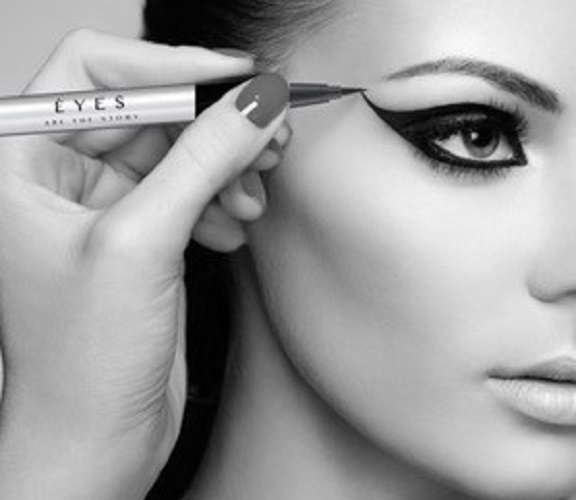
The Moment of Insight: A Revelation about Dry Eye Disease
The pivotal realization came when Amy discovered that dry eye disease occurs with twice the frequency in women compared to men. This raised an essential question: What activities do women engage in more than men?
The answer was straightforward—cosmetics. On average, women utilize around 12 beauty products daily, while men typically use about six.
As Amy delved deeper into her research, she uncovered some alarming truths.
For example, benzalkonium chloride (BAK), a preservative commonly found in glaucoma treatments, is also present in many cosmetic products, including eye makeup.
Even more troubling, the concentration of BAK permitted in cosmetics is thousands of times greater than that found in glaucoma medications.
This shocking discovery initiated a profound two-decade research journey exploring the correlation between cosmetics and dry eyes. The outcome? ÈYES ARE THE STORY—the pioneering cosmetics and skincare line specifically designed for individuals with sensitive eyes. Amy coined the term “optocosmetics” to define this groundbreaking approach that blends the realms of beauty and pharmaceuticals.
Understanding the Complexities of Dry Eye Syndrome
So, what precisely is dry eye syndrome, and why is it becoming increasingly common?
Dry eye occurs when your eyes fail to produce sufficient quality tears to maintain proper lubrication of the eye surface or when the eyes are unable to retain tears on their surface.
This can result in a variety of uncomfortable symptoms, which may include:
- Stinging or burning sensations
- A gritty feeling in the eyes
- Redness and irritation
- Blurred vision
- Light sensitivity
- Difficulty wearing contact lenses
Exploring the Interplay Between Makeup and Dry Eyes
The relationship between makeup and dry eyes is intricate and multifaceted. Those shimmering eyeshadows that we love? Tiny particles from them can infiltrate our tear film, leading to irritation and discomfort.
The mascara that enhances our lashes? It could potentially harbor bacteria that exacerbate eye discomfort. The very act of applying and removing eye makeup can also disrupt the fragile tear film that is essential for keeping our eyes lubricated and healthy.
Factors Increasing Women's Vulnerability to Dry Eyes
Women face a heightened risk of developing dry eyes due to a combination of factors. Hormonal changes throughout life, particularly during menopause, can have a profound impact on tear production levels.
The higher incidence of autoimmune disorders, such as Sjögren’s syndrome, among women further contributes to this issue. However, perhaps most pertinent to this discussion is the increased use of eye makeup and the trend of wearing false lashes, which can disrupt the delicate balance of our eyes.

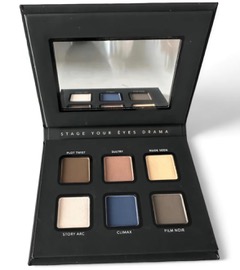
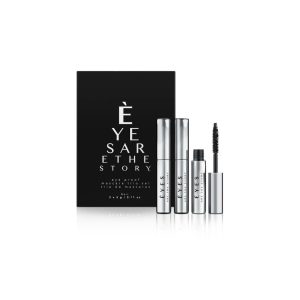
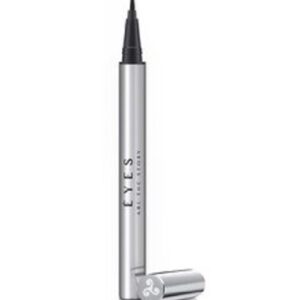
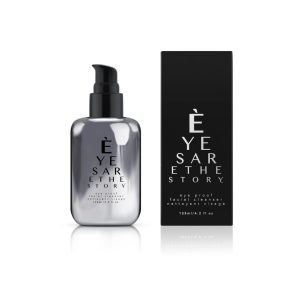


This topic strikes a chord with me, as I’ve been grappling with dry eyes for quite some time. It’s interesting how makeup has often been viewed primarily as a means of self-expression, yet for many women (and men), it poses genuine challenges, not just aesthetically, but also in terms of health.
I can really relate to what you’re saying about dry eyes and the struggle with makeup. It’s sort of surprising how something meant to enhance our appearance can also create real challenges when it comes to health and comfort. I’ve had my own battles with sensitive skin and products that, while designed to be beautiful, can sometimes lead to irritation rather than the glowy look I was hoping for.
It’s great to hear that this topic resonates with you. Dry eyes can really complicate what many consider a simple aspect of getting ready in the morning. For a lot of people, makeup not only enhances appearance but can also become a daily source of irritation or discomfort, especially when dealing with conditions like dry eyes.
Ah, the eternal struggle of beauty versus comfort! I feel like my makeup routine has turned into a high-stakes game of “Will this eyeliner make me cry or just enhance my already watery eyes?” It’s like my eyes are the ultimate diva—always demanding hydration and refusing to cooperate with my rosy-cheeked fantasies.
It’s interesting how our makeup routines can turn into a delicate balancing act, isn’t it? Your eyeliner struggle perfectly captures that. It’s frustrating when you envision a look that brings your confidence up, yet your eyes seem to have other plans. Hydration really is key, especially when dealing with watery eyes. Have you tried any specific eye creams or setting sprays designed to keep everything in place and comfortable?
Navigating the realm of makeup while managing dry eyes certainly presents a unique set of challenges that many seem to overlook in the beauty industry. As someone who has experienced dry eye syndrome firsthand, I can relate to the struggles associated with balancing eye health and the desire to look polished and put-together. It’s easy to take for granted the comfort of applying makeup until discomfort becomes the norm.
Navigating the realm of makeup with dry eyes really is a journey all its own. You capture that struggle so well. It’s interesting how something as simple as applying makeup can shift from an enjoyable ritual to a potential challenge. The irritation that comes with dry eyes can truly put a damper on our beauty routines, and unfortunately, it doesn’t always get the attention it deserves in the beauty world.
I completely get what you mean about the challenges of navigating makeup with dry eyes. It’s such a delicate balance between wanting to enhance your look and ensuring your eye health takes precedence. I’ve found that even small changes, like switching to hypoallergenic or water-based products, can make a big difference. It’s fascinating how the beauty industry is starting to pay a bit more attention to this issue, but there’s still a long way to go.
Navigating the intersection of beauty and health, particularly in the context of dry eye syndrome, raises crucial questions about inclusivity within the beauty industry. It’s enlightening to see brands like ÈYES ARE THE STORY acknowledging this challenge and striving to provide solutions that not only enhance beauty but also prioritize eye health.
It’s so refreshing to see a conversation around makeup shifting to include the effects it can have on eye health, especially with the increasing prevalence of dry eye syndrome. I can totally relate to the struggle. As someone who loves makeup, I sometimes feel like I have to choose between looking good and feeling comfortable. I mean, nothing ruins a day quicker than that gritty feeling when your eyes are too dry!
It’s a real balancing act, isn’t it? You want to express yourself and look great, but comfort is key. I’ve been there, diving into my makeup bag all excited to create a look, only to suddenly remember that my eyes are feeling dry and irritated. The irony of wanting to enhance your beauty while battling discomfort is frustrating, to say the least.
I totally get where you’re coming from. Finding that sweet spot between expressing yourself and being comfortable can really feel like a juggling act. I’ve had those days too, where I get all excited about trying a bold look, only to realize halfway through that my skin doesn’t agree or my eyes just won’t cooperate. It’s such a frustrating irony when beauty and comfort seem to contradict each other.
It’s refreshing to hear your perspective. That balancing act between self-expression and comfort is something many of us navigate regularly, especially in a world that often celebrates one over the other. I’ve been there too—excitedly experimenting with a look or even an outfit that feels daring, only to find it doesn’t sit right with my skin, mood, or just the environment around me. It can feel like you’re trying to find harmony in a chaotic symphony.
I completely relate to the struggle you described. That balancing act between self-expression and comfort really is like trying to find harmony in a chaotic symphony. It’s interesting how we often find ourselves drawn to styles and trends that resonate in exciting ways, but then realize they just don’t mesh with who we are or how we feel in our current space.
I totally relate to that balancing act you mentioned. It’s like we’re all trying to walk this tightrope between feeling fabulous and just being comfortable in our own skin. There’s something so empowering about makeup and self-expression, but when your eyes start feeling dry and irritated, it really takes away from the joy of it all. I’ve had days where I’ve layered on the eyeliner and mascara, only to feel that scratchy sensation creeping in, which makes you rethink the whole idea of ‘beauty’ versus ‘comfort.’
I can totally relate to that struggle. It’s such a peculiar feeling trying to strike that balance between expressing ourselves and prioritizing comfort. I’ve had days where I’m ready to experiment with bold colors and intricate looks, only to end up dealing with dry skin or irritated eyes. It’s a reminder that while makeup can be such a fun form of self-expression, our physical comfort plays a huge role in how we feel about ourselves.
It’s such a nuanced issue, isn’t it? The balance between wanting to look good and ensuring our eyes feel comfortable can be tricky. I sometimes wonder how many people out there are dealing with the same struggle without realizing the connection between their makeup choices and eye health.
You’ve captured such an important point about the intersection of beauty and eye health. It’s easy to get caught up in wanting to look our best, especially with so many beauty standards and trends constantly being showcased in media. I think many people don’t realize how certain products can impact their eye comfort, especially those with sensitive eyes or contact lens wearers.
You’ve raised a great point about the delicate balance between beauty and eye comfort. It’s surprising how easily we can overlook the impact beauty products have on our eyes. Many people might choose a mascara or eyeliner based on trends without considering how the formulas can cause irritation or dryness, especially for those with sensitive eyes or who wear contacts.
I can completely understand that struggle. It’s such a balancing act between wanting to express yourself through makeup and keeping your eyes feeling comfortable. I’ve heard more people discussing dry eye syndrome lately, and it’s interesting how it seems to be a growing concern amidst long hours on screens and different environmental factors.
It’s great to hear you relate to the struggle! Balancing makeup choices with eye comfort is definitely a challenge many of us face.
Navigating the intersection of beauty and health is indeed a multifaceted challenge that many of us can relate to. As someone who has personally dealt with dry eyes, I understand the struggle of wanting to express myself through makeup while being constrained by discomfort and irritation. It’s refreshing to see a conversation emerging around this topic, as it often feels like eye health doesn’t get the attention it deserves when discussing beauty products.
The intersection of beauty and health is an intriguing topic, especially when it comes to the challenges posed by dry eye syndrome in makeup application. It’s fascinating to consider how our approach to beauty has evolved, particularly in an era where self-expression often hinges on our makeup choices. Like many others, I’ve encountered the frustration of wanting to experiment with various eye looks while being constantly mindful of my eye health. Sometimes it feels like a delicate balancing act—the desire to look good vs. the necessity of maintaining comfort and overall well-being.
It’s really insightful that you pointed out the balance between beauty and health, especially with something like dry eye syndrome. It’s like a constant tug-of-war, isn’t it? On one hand, there’s this whole world of makeup with endless possibilities to express who we are or even just to enhance our look for the day. On the other, you have the reality of keeping our eyes comfortable and healthy.
This post really resonates with me, as I’ve also struggled to find that sweet spot between enjoying makeup and dealing with the discomfort of dry eyes. As someone who loves to experiment with different eye looks—especially during special occasions—I’ve often found myself eyeing (pun intended) my collection of eyeliners and mascaras with a mix of excitement and trepidation.
I totally get what you’re saying. Balancing the love for makeup with the reality of dry eyes can be a real challenge. It’s great that you enjoy experimenting with different eye looks, especially for special occasions—there’s something so transformative about makeup that can boost our confidence and creativity.
I totally get that struggle, and I recently came across an insightful piece about managing dry eyes after LASIK that might offer some helpful solutions.
‘LASIK and Dry Eyes: Solutions for Post-Surgery Discomfort’
https://writebuff.com/lasik-and-dry-eyes-solutions-for-post-surgery-discomfort/.
I completely relate to the struggle of balancing makeup and dry eyes. It’s interesting how our beauty routines can often overlook the needs of eye health, even though it plays such a critical role in our overall comfort and confidence. I’ve found that switching to hypoallergenic and eye-friendly makeup products has made a significant difference for me. Brands that prioritize hydration and breathability in their formulations are definitely worth exploring.
The discussion around makeup and dry eye syndrome raises some important points about the intersection of beauty and health, a balance that many of us often overlook in our pursuit of the perfect aesthetic. Personally, I have experienced the discomfort that comes with wearing makeup while managing dry eyes, and it’s a frustrating predicament. The joy of enhancing our looks can quickly turn into irritation and discomfort, leading to a reluctance to experiment with different products or techniques.
You’ve touched on a significant point that resonates with many of us. The struggle to find that sweet spot between looking good and feeling comfortable is a challenge that often doesn’t get enough attention. I completely understand the frustration you feel when your attempts to enhance your appearance end up making everything worse, especially with something as uncomfortable as dry eye syndrome.
You’ve touched on a really important aspect of beauty that often gets overshadowed by the allure of aesthetics. The intersection of beauty and health can be so complicated, especially when it comes to makeup and conditions like dry eye syndrome. It’s almost ironic, isn’t it? You want to enhance your features, but sometimes the very products meant to elevate our looks can lead to discomfort.
You’ve touched on such a relatable struggle. The intersection of beauty and health really does create a unique set of challenges for many of us. I completely understand the balance you’re trying to strike. It’s frustrating when something that’s meant to enhance our appearance can lead to discomfort.
I really appreciate you sharing your thoughts; it does highlight how intertwined beauty and health can be. It’s such a delicate balance—wanting to feel good in our skin while also navigating the potential pitfalls that come with certain beauty standards or products.
I completely resonate with that perspective on beauty and health; it really is a fine line we walk. Sometimes it feels like societal standards can overshadow our individual definitions of beauty, creating pressure to conform in ways that might not align with our authentic selves.
I really appreciate this discussion on the intersection of eye health and makeup use. As someone who has struggled with dry eyes, I can relate to the frustration of trying to enjoy beauty rituals while managing discomfort. It’s fascinating to see how brands like ÈYES ARE THE STORY are addressing these issues by marrying scientific research with beauty solutions.
Your experience highlights a real challenge many people face: the desire to enjoy beauty routines while managing eye conditions like dryness. It can feel like a constant balancing act, especially when so many products on the market don’t take those needs into account.
It’s refreshing to see the conversation around makeup and eye health being brought to the forefront. I can relate to the struggle of wanting to express ourselves through beauty while dealing with dry eyes. For a long time, I found myself avoiding certain eye products that I loved because they exacerbated my discomfort.
I completely understand where you’re coming from. Striking that balance between self-expression and managing eye discomfort is definitely a challenge. I’ve had my own experiences with sensitive eyes, especially when trying out new makeup products. It often feels like a trade-off—picking the aesthetics over comfort.
I appreciate the way you’ve highlighted the intersection of beauty and health, particularly with the growing awareness of how conditions like dry eye syndrome can significantly impact our makeup routines. I can totally relate to this struggle. As someone who has dealt with dry eyes for several years, I’ve found it increasingly challenging to find a balance between wanting to enhance my appearance with makeup and taking care of my eye health.